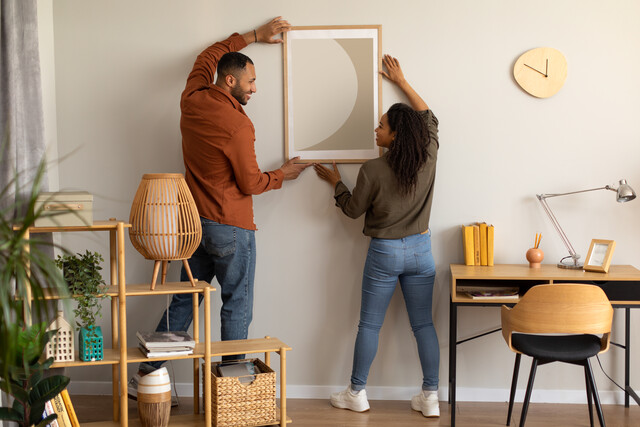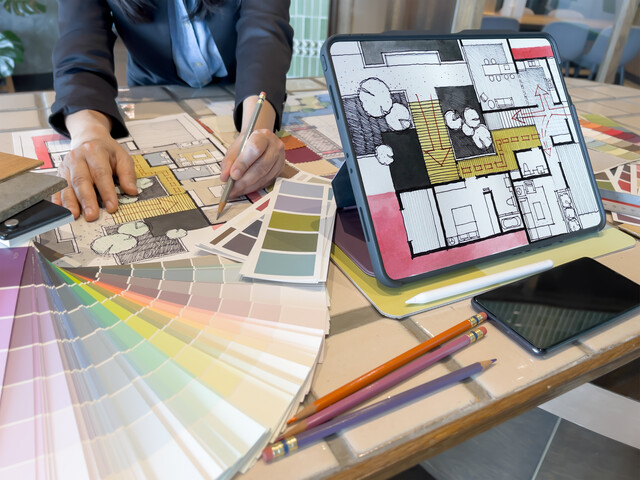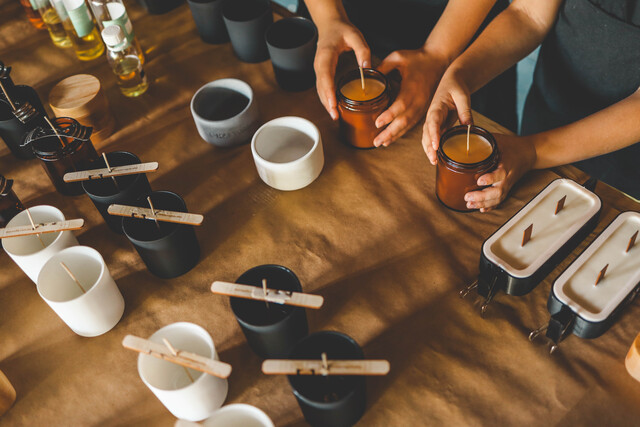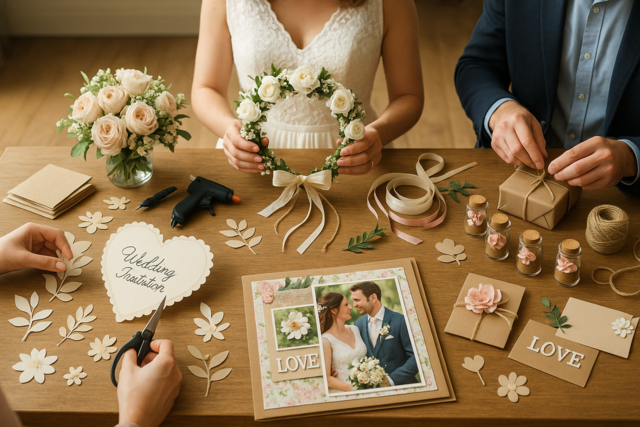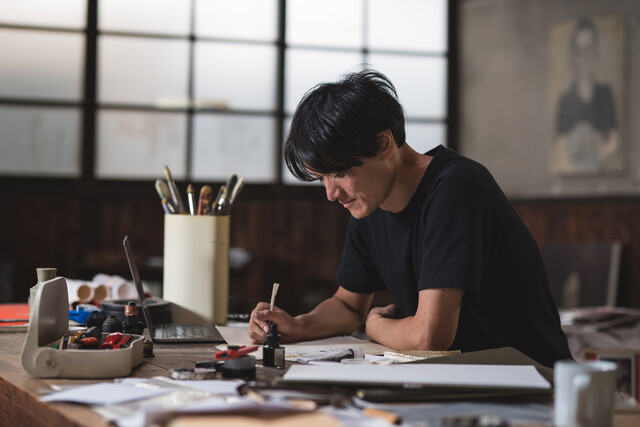INTRODUCTION
Industrial style is quite interesting. Its inspiration comes from the age of industry, spurred by the Industrial Revolution, its height being in the 1800s, and extending up until recently to include a shift into technology-based industries. The idea behind the design inspired by this time is to showcase an appreciation of raw materials and the energy sources used to make the process occur, putting together those elements into something spectacular. Since the notion of industry began, we evolved from coal and steam fueled factories to electricity driven, and now alternative energy solutions like wind and solar. These ideas of invention, progress, and manufacturing translate into an engineering inspired Industrial style decor. The resulting look is clean, cool, spacious, geometric, and cutting edge.
Industrial style became quite popular in downtown lofts with exposed bricks, pipes, and air ducts to further enhance the engineering aspect of the style, so spaces like these are ideal for Industrial style. Regular suburban rooms will look great outfitted in industrial decor as well, and there are plenty of tricks to help enhance the room's engineering elements. Rooms that will look great in Industrial style include bedrooms, kitchens, living rooms, and dining rooms, especially those in open floor configurations.
In this article you'll learn:
- Top color choices for achieving an Industrial style room
- Textures and fabrics most aligned with the decorating theme
- Finishing touches to consider utilizing
- Style lesson in achieving a sleek, not cold look
- Developing a Steampunk design where Industrial meets Aristocratic style
COLORS
Industrial style emphasizes manufacturing inspired elements, such as those old steel and iron assembly lines in large brick warehouses. Picking a color palette representative of this image is ideal. However there are two routes a room can take- early industry or more modern industry.
Keep accent colors to a minimum. Good choices are red and yellow which will warm up and energize the otherwise cool palette. Another interesting route could be an Industrial Organic style where green accents and plants are incorporated into the design.
TEXTURES AND FABRICS
It's all about the hard surfaces in Industrial style, so keep fabrics neutral and to a minimum. Cotton is a good choice for bed sheets, while suede and leather hold up to the hardier elements well.
Keep windows bare to allow an abundance of natural light to warm the space. If privacy is an issue, install simple shades that blend into the window frame when opened. A possibility is very sheer curtains hung from an iron rod to evoke a feminine element, if that's the route your Industrial style will take.
The bulk of the design lies on the hardier materials. Metals are first and foremost. Iron emphasizes the early notions of industry, while silver steel and aluminum represents modern industry. Try to keep choices limited to one primary type of metal to avoid overwhelming the room.
Exposed brick is an excellent component for the design. However if the room doesn't have this feature, try nailing weathered wooden planks to the wall. The worn in, hardy effect will be achieved and works especially well with a concrete floor. On that note, feel free to paint concrete a glossy enamel color to help polish the overall look.
Another route to create architectural elements is to use a painting technique with darker toned colors to give the illusion of a concrete wall. This will need to be offset with a wooden floor to ensure the room doesn't feel too cold.
With all these heavy materials, work etched glass into the scheme for lightness. The opaque look adds interest without adding weight, but is more substantial than ordinary glass allowing it to stand up to the metal and stone counterparts.
FURNITURE STYLES
When choosing furniture pieces be aware of the space the pieces consume. Space is a concern in this styled room, as in the more space the better. Within the Industrial style room, due to the heavy tendencies of the materials, the area can quickly feel weighed down with bulky items. Imagine packing too much metal and weathered wood in an exposed brick room- it results in a heavy, almost claustrophobia effect. With sleeker cuts of the heavy materials a certain lightness is achieved, contributing to additional space within the room. With this in mind, furniture pieces shouldn't be too bulky. An ideal piece would be an extra large dining room table in square footage with a thin table top because even with its large area, the table maintains a sleeker look thanks to the thinness of the tabletop. Take the concept a step further by limiting large pieces to one or two within a room.
Juxtapose materials for interest. Find iron and weathered wood pieces, and add cotton pillows to iron wrought chairs for softness and comfort. If the space has exposed metal beams and piping try placing a primarily wooden shelf underneath for contrast.
Finally opt for interesting, older pieces such as an early 1900s mail sorter or a midcentury library card catalog holder. Oftentimes these pieces not only have interesting stories, but the look fits in perfectly with Industrial style in terms of lines and the mixed use of materials.
FINISHING TOUCHES
Additional elements within the Industrial style should be space and functionality driven. Make use of the various materials ideal for the style and engineering inspired components. A few ideas include:
- Display books on metal pipes screwed into the wall.
- Hang posters of blueprints for manufactured or engineered products.
- Exposed gears, particularly when designed around working clocks.
- Stack a few concrete bricks to make a low shelf or even glass topped coffee table.
- An arrangement of black and white photos.
- Brushed metal fans not only look industrial, but work to circulate air on hot summer days.
- For a feminine touch, lay out a fluffy, shaggy area rug in white. It'll lighten and warm up the space.
There are numerous industrial style objects available. Avoid overstuffing the room with the objects as space is a key component of the style. Also, determining the underlying theme can reveal a wealth of related objects, for example an Industrial style focused on optometry garners old eye exam boards, vintage spectacles on a shelf, and a collection of vintage magnifying glasses. Try an Industrial room focused on airplanes to incorporate blueprints for jets, models of the Wright Brothers' creation, and vintage binoculars. Creatively consider your interests, and you'll end up with a unique room.
STYLE LESSON- SLEEK NOT COLD
A typical problem with Industrial style and other minimalist centric styles is an easy tendency to slip from sleek and welcoming to cold and uninviting. Not only do color palettes contribute to this effect, but the kinds of materials used within a room as well as the finishing touches play a significant role as well. Industrial style happens to include cool elements from all three components: a cool palette, cold materials, and sparse objects which could inhibit personalization. This can easily be remedied with the use of additional warming elements. Here are some ideas:
- When using a cooler color palette, be sure to include plenty of natural light for warmth. If windows don't allow enough natural light, use artificial light to supplement. Choose light bulbs that emit a softer light, versus a bright, harsh light which emphasizes coldness further.
- In particular for Industrial style, keep materials well mixed for balance. Add a wood table or a leather chair where too much stone or metal create a cold area. The effect works backwards as well: place an iron table in front of a wooden paneled wall, or a glass table top on a wooden base.
- For styles that emphasize geometric shapes, include a few curves to help soften the lines. In the Industrial style room this can be a soft leather armchair or rounded metal chairs. Additionally, don't be afraid to add a few neutral pillows or throw blankets to increase comfort both aesthetically and literally.
- Keep personalization on the forefront when adding finishing touches to include personal photos, books, and music collections. Interests easily translate into a welcoming humanistic factor that quickly warms up a space.
Other than the warm and cool color palettes, determining what elements constitute as cold and warm can be subjective and even vary depending on the situation. However, a good measure is the touch test: if in a 70 degree room a material feels cool to the touch, it can be classified as a cool element. Typically, stones, metals, and glass feel cooler than wood, cloth materials, and leather. Each of these materials work well in an Industrial style room and work even better when the cool and warm elements are kept in harmony, maintaining balance within the decor.
SURPRISING FIT- STEAMPUNK, AN ARISTOCRATIC TAKE ON INDUSTRIAL STYLE
An exciting and creative take on Industrial style combines traditional industry with Aristocratic elements. The result is as if a 19th century Aristocrat decorated in an engineering-inspired style. It's filled with interesting details, durable yet elegant furniture, and inventive touches. Begin with an Aristocratic mentality, then incorporate Industrial elements like metals and stone. Here are some guidelines:
- Choose a palette of muted neutral colors: browns, blacks, and cremes. Add rich reds, golden yellows, or deep blues for accents.
- Use the elegantly carved and high backed couches reminiscent of Aristocratic style.
- To marry the two opposing views of window treatments, bare and opulent, choose lighter colored satin drapes in a rich, lighter tone like a golden color. Drape from the top and off the sides, leaving the actual window barely concealed.
- If the room features exposed brick, let it shine. If not, consider hanging weathered wooden panels for interest.
- This is definitely a style to seek interesting vintage style furniture pieces.
- Add seating covered in buttery, well-worn leather.
- Hang technical or anatomical artwork and sketches to reenforce the ideas of invention and discovery.
- Use groupings of photos in sepia tones for an old world feel.
- Position old monocles or top hats around the room for whimsical touches.
Steampunk not only pays a whimsical homage to industry, but an exciting time in history when exploration and discovery was just beginning to gain momentum. Be careful when combining Aristocratic and Industrial styles that the look doesn't become too heavy from the rich Aristocratic fabrics and heavy Industrial materials. The resulting look should be spacious, yet filled with contrasting and technical details.
*LEARN MORE Research the Steampunk style to learn more about its history and influences. Looking through pictures of the look will also help get creative juices flowing.
SUMMARY
The downtown loft favorite of Industrial style pays homage to the age of industry, encompassing manufacturing industries from the 1800s up until the present. The heavily engineering inspired room results in a clean, cool, spacious, and cutting edge style.
Begin with a muted neutral color palette, or a steely palette if choosing a more modern industrial style. Keep fabrics to a minimum, choosing from durable cotton, suede, and leather. Materials steal the show in this style: iron, steel, weathered wood, brick, and concrete. Etched glass helps break up the hardness of the materials, as does a few well chosen area rugs.
Look for sleek, geometric furniture specifically in mid-century to modern styles. Space should be a consideration when choosing pieces, as to avoid too much bulk. Juxtapose various materials and mixed-material pieces to help create interest and balance.
Finishing touches should be limited to engineering inspired and functionality such as an exposed gear working clock and iron lamps. Keep windows untreated for plenty of natural light, and opt for softer light bulbs for warmer artificial light. This close attention to light decreases the chances of turning the sleek style into an uninviting space.
Industrial style is easily accomplished in many rooms and makes an ideal choice to increase the spaciousness and functionality of a room. Steer the style down a personalized route with underlying themes for added interest and better direction when choosing elements. Finally, regardless of the style choice, be sure to balance cool and warm elements for an inviting room.
Key elements for achieving an Industrial style:
- Theme: Inspired by manufacturing and engineering, the Industrial style is clean, cool, spacious, geometric and cutting edge.
- Color: Choose a muted color palette, and incorporate steely colors for a modern direction. Keep accent colors, such as red and yellow, to a minimum.
- Textures and fabrics: It's all about the hard surfaces in Industrial style: iron, steel, exposed brick, concrete, and weathered wood. Keep fabrics neutral and to a minimum, to include cotton, suede and leather. Add etched glass for lightness that can stand up to the heavy elements.
- Furniture style: Look for sleek, interestingly styled furniture in mid-century to modern styles. Be aware of the space the pieces consume, as the pieces shouldn't be too bulky. Juxtapose various materials for interest.
- Objects to pull it together: Additional elements within the Industrial style should be space and functionality driven. Make use of the various materials ideal for the style and engineering inspired components, while avoiding too many items in the room. This is the place where underlying themes can shine through such as feminine or specific industry realms.
Words of caution:
- With so many heavy materials in Industrial style, it's easy to get weighed down. That's why it's important to allow plenty of light and seek sleeker furniture designs.
- If exposed brick isn't a feature in the room, don't try to paint an exposed brick design. It will likely come out looking off. Instead, use weathered wood for panels or paint the wall in a concrete effect.
- Keep balance in check by juxtaposing the recommended materials, this avoids a slippery slope of ending up with a too cold room.






